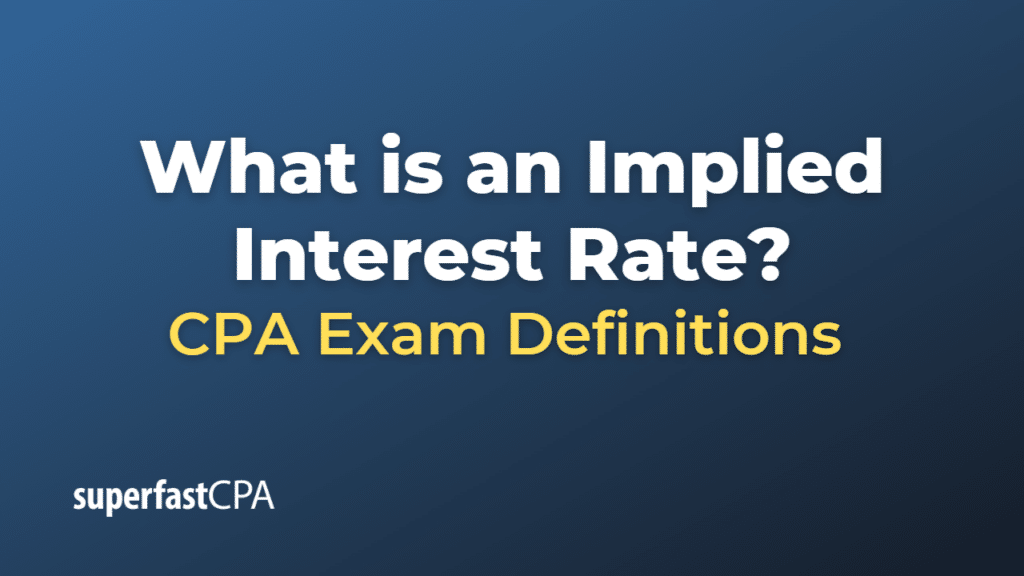Implied Interest Rate
An implied interest rate is the rate of interest that is not explicitly stated but can be inferred from the terms of a financial transaction. It is the rate that equates the present value of a series of future cash flows to a current investment or loan amount. The implied interest rate is often used in leases, bonds, installment purchases, or other contracts where payments are made over time.
For instance, let’s consider a zero-coupon bond (a type of bond that doesn’t pay periodic interest but is issued at a discount to its face value). If a zero-coupon bond with a face value of $1,000 is issued for $900 and will mature in one year, the implied interest rate is the rate that equates the present value of the future cash flow ($1,000) to the current investment ($900). In this case, the implied interest rate would be approximately 11.11%, calculated as ($1,000 / $900) – 1.
In the context of leasing, the implied interest rate (also called the implicit rate) is the rate that makes the present value of all future lease payments equal to the initial cost of the leased asset.
It’s important to note that calculating the implied interest rate requires knowledge of the time value of money concept and often involves complex financial calculations that might be facilitated by financial calculators or spreadsheet software.
Example of an Implied Interest Rate
Let’s use the context of a loan for our example.
Suppose you borrow $10,000 from a lender, and agree to pay it back in a single lump sum of $12,000 in two years. The interest rate is not explicitly stated in the agreement, so you need to calculate the implied interest rate.
The implied interest rate can be calculated as follows:
We need to find the rate (r) that solves the following equation:
$10,000 * (1 + r)^2 = $12,000
By simplifying the equation, we find:
(1 + r)^2 = $12,000 / $10,000 = 1.2
Taking the square root of both sides, we find:
1 + r = sqrt(1.2) ≈ 1.0954
Subtracting 1 from both sides gives:
r ≈ 0.0954 or 9.54%
So, the implied annual interest rate in this loan agreement is approximately 9.54%.
This calculation assumes compound interest, i.e., that the interest is being compounded once per year. If the interest were being compounded more frequently, the calculation would be more complex.
Please note that real-world calculations might be more complex due to more frequent compounding, other costs involved, or other conditions of the loan or investment.













